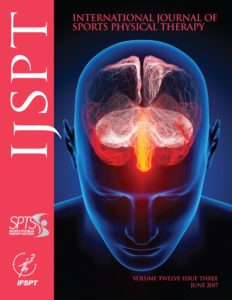Background: Disruption of the visual and vestibular systems is commonly observed following concussion. Researchers have explored the utility of screening tools to identify deficits in these systems in concussed patients, but it is unclear if these tests are measuring similar or distinct phenomena.
Purpose: To determine the relationships between common vestibular tests including the King-Devick (K-D) test, Sensory Organization Test (SOT), Head Shake-Sensory Organization Test (HS-SOT), and Dynamic Visual Acuity (DVA) test, when administered contiguously, to healthy recreational athletes aged 14 to 24 years.
Study Design: This study used a prospective design to evaluate relationships between the K-D, SOT, HSSOT, and DVA tests in 60 healthy individuals.
Methods: Sixty participants (30 males, 30 females; mean age, 19.9±3.74 years) completed the four tests in a single testing session.
Results: Results did not support a relationship between any pair of the K-D, SOT, HS-SOT, and DVA tests. Pearson correlations between tests were poor, ranging from 0.14 to 0.20. As expected the relationship between condition 2 of the SOT and HS-SOT fixed was strong (ICC=0.81) as well as condition 5 of the SOT with HS-SOT sway (ICC=0.78). The test-retest reliability of all 4 tests was evaluated to ensure the relationships of the 4 tests were consistent between test trials and reliability was excellent with intraclass correlations ranging from 0.79 to 0.97.
Conclusions: The lack of relationships in these tests is clinically important because it suggests that the tests evaluate different aspects of visual and vestibular function. Further, these results suggest that a comprehensive assessment of visual and vestibular deficits following concussion may require a multifaceted approach.
Summary Points:
- K-D Test, an easily-administered oculomotor assessment tool, also incorporates the cognitive domain because it identifies impairment of eye movements, attention, language, and other symptoms that are associated with suboptimal brain function.
- The results of the current study are clinically important because knowing that there were no relationships between the K-D, SOT, HS-SOT, and DVA tests may encourage healthcare professionals to appreciate the complexity of impairments in visual-vestibular function.
- Each of these tests seem to measure a specific and seemingly independent aspect of the visual or vestibular system.

